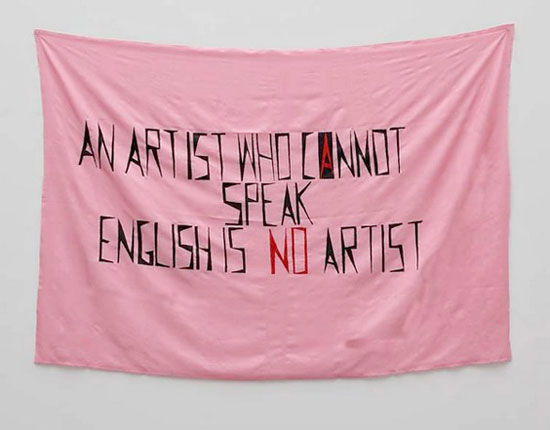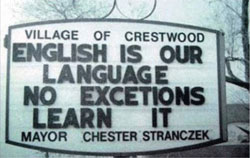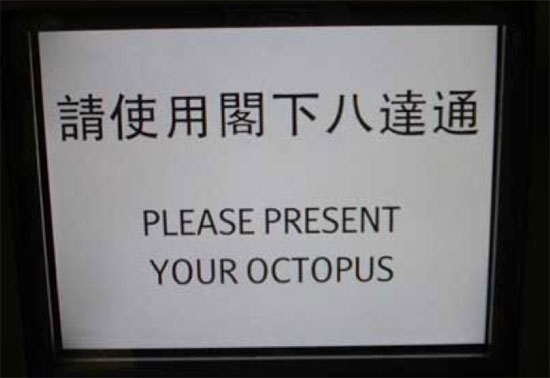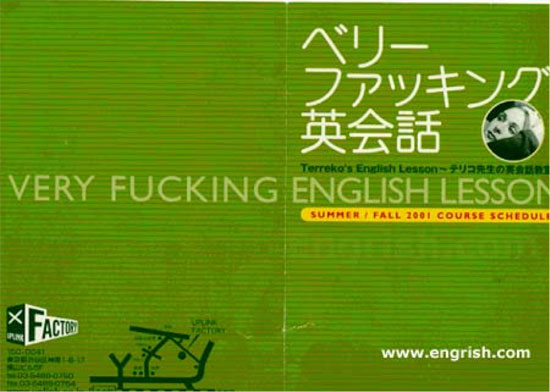Last year, Triple Canopy published Alix Rule and David Levine’s “International Art English.”1
As a broad critique of globalized artspeak semantics, the essay has
since sparked many debates around the exaggerated claims and imprecise
promotional language of contemporary art. In this issue of e-flux journal, Martha Rosler and Hito Steyerl each respond to Rule and Levine’s essay.
***
Let’s start with something else. Ever heard of the English Disco
Lovers? A fantastic online project trying to outgun (or rather outlove)
their acronym twin—the racist English Defence League, also abbreviated
as “EDL”—on Facebook and Twitter. For this they use the bilingual slogan
“Unus Mundas, Una Gens, Unus Disco (One World, One Race, One Disco).”
The English Disco Lovers’ name is, of course, a deliberate misreading of
the original, a successfully failed copy coming into being via
translation.
Likewise in the case of many exhibition press releases—or so Alix
Rule and David Levine claim in their widely read essay “International
Art English.”2
International Art English, or “IAE,” is their name for the decisively
amateurish English language used in contemporary art press releases. In
order to investigate IAE, Rule and Levine undertake a statistical
inquiry into a set of such texts distributed by e-flux.3
They conclude that the texts are written in a skewed English full of
grandiose and empty jargon often carelessly ripped from mistranslations
of continental philosophy.

Mladen Stilinović, An Artist Who Cannot Speak English Is No Artist, 1992.
So far so good. But what are they actually looking at? In the
unstated hierarchies of publishing, press releases barely even make it
to the bottom. They have the lifespan of a fruit fly and the
farsightedness of a grocery list. Armies of these hastily aggregated,
briefly circulated, poorly phrased missives constantly vie for attention
in our clogged inboxes. Typically written by overworked and underpaid
assistants and interns across the world, the press release’s pompous
prose contrasts most acutely with the lowly status of its authors. Press
releases are the art world’s equivalent of digital spam, vehicles for
serial name-dropping and para-deconstructive waxing, in close
competition with penis enlargement advertisements. And while they may
well constitute the bulk of art writing, they are also its most
destitute strata, both in form and in content. It is thus an interesting
choice to focus on this as a sampling of art-speak, because it is not
exactly representative. Meanwhile, authoritative high-end art writing is
respectfully left to keep pontificating behind MIT Press paywalls.4
So what is the language used in the sample examined by Rule and
Levine? As the authors incontrovertibly prove, it is incorrect English.
This is shown by statistically comparing press releases against the
British National Corpus (BNC), a database of British English usage.
Unsurprisingly, this exposes the deviant nature of IAE, which derives,
the authors argue, from copious foreign—mainly Latin—elements, leftovers
from decades of mistranslated continental art theory. This creates a
bastardized language that Rule and Levine compare to pornography: “we
know it when we see it.” So, on the one hand, there is the BNC usage, or
normal English. On the other, there is IAE, deviant and pornographic.
Oh, and alienating too.
But who is it that is willingly writing porn here? According to Rule
and Levine, IAE is, or might be, spoken by an anonymous art student in
Skopje, at the Proyecto de Arte Contemporáneo Murcia in Spain, by Tania
Bruguera, and by interns at the Chinese Ministry of Culture.5
At this point I cannot help but ask: Why should an art student in
Skopje—or anyone else for that matter—conform to the British National
Corpus? Why should anyone use English words with the same frequency and
statistical distribution as the BNC? The only possible reason is that
the authors assume that the BNC is the unspoken measure of what English
is supposed to be: it is standard English, the norm. And this norm is to
be staunchly defended around the world.

As Mladen Stilinović told us a long time ago: an artist who cannot speak English is not an artist.6
This is now extended to gallery interns, curatorial graduate students,
and copywriters. And even within our beloved and seemingly global art
world, there is a Standard English Defence League at work, and the BNC
is its unspoken benchmark. Its norms are not only defined by grammar and
spelling, but also by an extremely narrow view of “incorrect English.”
As Aileen Derieg, one of the best translators of contemporary political
theory, has beautifully argued: “incorrect English” is anything “not
phrased in the simplest, shallowest terms, and the person reading it
can’t be bothered to make an effort to understand anything they don’t
already know.”7
In my experience, “correct” English writing is supposed to be as
plain and commonsensical as possible—and, unbelievably, people regard
this not as boring, but as a virtue. The climax of “correct” English art
writing is the standard contemporary art review, which is much too
afraid to say anything and often contents itself with rewriting press
releases in compliance with BNC norms. However, the main official rule
for standard English art writing is, in my own unsystematic statistical
analysis: never offend anyone more powerful than yourself. This rule is
followed perfectly in the IAE essay, which ridicules the fictive Balkan
art student who aggregates hapless bits of jargon in the hopes of
attracting interest from curators. Indeed, this probably happens every
day. But it’s such a cheap shot.
This is not to say that one shouldn’t constantly make fun of
contemporary art worlds and their preposterous taste, their pretentious
jargons and portentous hipsterisms. The art world (if such a thing even
exists) harbors a long tradition of terrific self-serving sarcasm. But
satire as one of the traditional tools of enlightenment is not only
defined by making fun. It gains its punch from who is being made fun of.
But Voltairean satire is mostly too risky. We are indeed lacking
authors attacking or even describing, in any language, the art world’s
jargon-veiled money laundering and post-democratic Ponzi schemes. Not
many people dare talk about post-mass-murder, gentrification-driven art
booms in, for example, Turkey or Sri Lanka. I certainly wouldn’t mind a
lot of statistical inquiry into these developments, whether in IAE or
Kurdish, satirical or serious.
But this is not Rule and Levine’s concern. Instead, they manage to
prove beyond a statistical doubt that IAE is deviant English. Fair
enough, but so what? And furthermore, doesn’t this verdict underestimate
the sheer wildness at work in the creation of new lingos? Alex Alberro
has demonstrated that advertising and promotion crucially created a
context for much early conceptual art in the 1960s.8
And today, the aggregate status of digitally circulated data is
wonderfully echoed in many so-called post-internet practices that
congenially mash up online commerce tools and itinerant JPEGs using (or
abusing) basic InDesign wrecking skills, creating fantastic crashes of
accelerated data sets within wacky circulation orbits. The intricacies,
undeniable fallacies, and joys of digital dispersion and circulation are
not, however, Rule and Levine’s focus. Nor are the politics of
translation and language. Their aim is to identify non-standard English
(or patronizingly praise it as involuntary poetry). But we should not
underestimate their analysis as just a nativist disdain for rambling
foreigners.
In an admirable essay, Mostafa Heddaya has pointed out the undeniable
complicity of IAE art jargon with political oppression in a multipolar
art world where contemporary art has become a must-have accessory for
tyrants and oligarchs.9
By highlighting the use of IAE to obfuscate and obscure massive
exploitation—such as the contested construction by New York University
and the Guggenheim of complexes on Saadiyat Island in Abu Dhabi—Heddaya
makes an extremely important intervention in the debate.10
Whatever comes into the world through the global production and
dispersion of contemporary art is dripping from head to toe, from every
pore, with blood and dirt, to quote Karl Marx, another forerunner of
IAE. This certainly includes many instances of IAE, whose spread is
fueled, though by no means monopolized, by neo-feudal,
ultraconservative, and authoritarian contemporary art rackets. IAE is
not only the language of interns and non-native English speakers. It is
also a side effect of a renewed primitive accumulation operating
worldwide by means of art. IAE is an accurate expression of social and
class tensions around language and circulation within today’s art worlds
and markets: a site of conflict, struggle, contestation, and often
invisible and gendered labor. As such, it supports oppression and
exploitation. It legitimizes the use of contemporary art by the 1%. But
much like capitalism as such, it also enables a class and geographical
mobility whose restrictions are often blatantly defied by its users. It
creates a digital lingua franca, and through its glitches, it starts to
show the outlines of future publics that extend beyond preformatted
geographical and class templates. IAE can also be used to temporarily
expose some of the most glaring aspects of contemporary art’s dubious
financial involvements to a public beyond the confines of (often
unsympathetic) national forums. After all, IAE is also a language of dissidents, migrants, and renegades.
Again, none of this is of interest to Rule and Levine. Fair enough. I
doubt political economy matters much in the BNC. But their essay
perfectly expresses the backside of Heddaya’s argument. Because, as Rule
and Levine correctly state, after IAE has become too global to
intimidate anyone, the future lies in a return to conventional highbrow
English. And indeed, this is not a distant future, but the present, as
evidenced by a massive and growing academic industry monetizing and
monopolizing accepted uses of English. UK and US corporate academia has
one major advantage over the international education market: the ability
to offer (and police) proper English skills.
No gallery in Salvador da Bahia, no project space in Cairo, no
institution in Zagreb can opt out of the English language. And language
is and has always been a tool of Empire. For a native speaker, English
is a resource, a guarantee of universal access to employment in
countless places around the globe. Art institutions, universities,
colleges, festivals, biennales, publications, and galleries will usually
have American and British native speakers on their staff. Clearly, as
with any other resource, access needs to be restricted in order to
protect and perpetuate privilege. Interns and assistants the world over
must be told that their domestic—and most likely public—education simply
won’t do. The only way to shake off the shackles of your insufferable
foreign origins is to attend Columbia or Cornell, where you might learn
to speak impeccable English—untainted by any foreign accent or
non-native syntax. And after a couple of graduate programs where you pay
$34,740 annually for tuition, you just might be able to find yet
another internship.11

But here is my point: chances are you will be getting this education
on Saadiyat Island, where NYU is setting up a campus, whose allure for
paying customers resides in its ability to teach certified English to
non-native speakers. In relation to Heddaya’s argument, Frank Gehry’s
fortress will be paid for not only by exploiting Asian workers, but also
by selling “correct” English writing skills.
Or you might pay for this kind of education in Berlin, where UK and
US educational franchises, charging students seventeen thousand dollars a
year to learn proper English, have slowly started competing with the
city’s own admittedly lousy, inadequate, and provincial free art
schools.12
Or you might pay for such an education in countless already existing
franchises in China, where oppressive art speech will soon be delivered
in pristine BNC English. Old imperial privilege nestles quite
comfortably behind deconstructive oligarchic facades, and the policing
of “correct” English is the backside of IAE-facilitated neo-feudalism.
Such education will leave you indebted, because if you don’t pawn or
gamble your future on acquiring this skill, you will be shamed out of
the market for unpaid internships just because you aggregated some
critical theory that monolingual US-professors translated wrongly
decades ago. For the art student from Skopje, it’s no longer “publish or
perish.” It’s “pay or perish”!
That’s why I couldn’t care less when someone “unfolds his ideas,” or
engages in “questioning,” or in “collecting models of contemporary
realities.” Not everyone is lucky enough, or wealthy enough, to spend
years in private higher education. Convoluted as their wordsmithing may
be, press releases convey the sincere and often agonizing attempt by
wannabe predators to tackle a T. rex. And as Ana Teixeira Pinto has
said: nothing truly important can be said without wreaking havoc on the
rules of grammar.
Granted, IAE in its present state is rarely bold enough to do this.
It hasn’t gone far enough on any level. One reason is perhaps that it
took its ripping off of Latin (and other languages) too seriously. IAE
has clung to preposterous claims of erudition and has awed generations
of art students into dozing through Critical Studies seminars—even
though its status as aggregate spam is much more interesting.13
So we—the anonymous crowd of people (which includes myself) sustaining
and actually living this language—might want to alienate that language
even further, make it more foreign, and decisively cut its ties to any
imaginary original.
If IAE is to go further, its pretenses to Latin origins need to be
seriously glitched. And for a suggestion on how to do this, we need look
no further than the EDL’s ripped off slogan: Unus Mundas, Una Gens,
Unus Disco (One World, One Race, One Disco). Let’s ignore for a moment
that the word “disco” could sound so foreign that Rule and Levine might
sensibly suggest renaming it “platter playback shack.” Because actually
EDL’s slogan is hardly composed of Latin at all. Rather, it’s written in
IDL: International Disco Latin. It is a queer Latin made by splashing
mutant versions of gender across assumed nouns. It’s a language that
takes into account its digital dispersion, its composition and artifice.

This is the template for the language I would like to communicate in,
a language that is not policed by formerly imperial, newly global
corporations, nor by national statistics—a language that takes on and
confronts issues of circulation, labor, and privilege (or at least
manages to say something at all), a language that is not a luxury
commodity nor a national birthright, but a gift, a theft, an excess or
waste, made between Skopje and Saigon by interns and non-resident aliens
on Emoji keyboards. To opt for International Disco Latin also means
committing to a different form of learning, since disco also means “I
learn,” “I learn to know,” “I become acquainted with”—preferably with
music that includes heaps of accents. And for free. And in this
language, I will always prefer anus over bonus, oral over moral, Satin
over Latin, shag over shack. You’re welcome to call this pornographic,
discographic, alienating, or simply weird and foreign. But I suggest:
Let’s take a very fucking English lesson!
×
From e-flux.
No hay comentarios:
Publicar un comentario